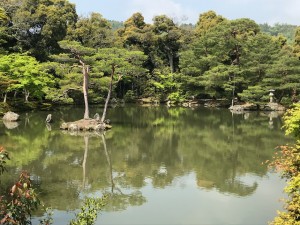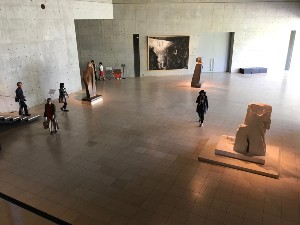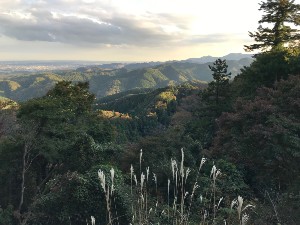The Prince Asaka Residence and Gardens

Prince Yasuhiko was the eighth son of Prince Kuni Asahiko and the Tsunoda Sugako. Prince Kuni Asahiko was the youngest prince descended from the Fushimi-no-miya, one of the four branch houses of the imperial dynasty (shinnōke) entitled to provide a successor to the throne. The family was based in Kyoto.
In 1906, the Emperor Meiji authorized Prince Yasuhiko to begin a new branch of the imperial family as Asaka-no-miya. Prince Asaka married Nobuko, Princess Fumi, the eighth daughter of Emperor Meiji in 1909. Prince and Princess Asaka had four children.
A career military man graduating from the Imperial Japanese Army Academy on 27 May 1908. Commissioned a second lieutenant of infantry on 25 December, Prince Asaka was promoted to lieutenant in December 1910, captain in August 1913, major in July 1918, and lieutenant-colonel in August 1922.
In the early 1920's Prince Asaka studied military tactics at the École spéciale militaire de Saint-Cyr in France, along with his half-brother Prince Naruhiko Higashikuni and his cousin Prince Naruhisa Kitashirakawa. Unfortunately, in April of 1923 the prince was seriously injured in a car accident in that killed Prince Kitashirakawa.
Princess Asaka traveled to France to help the prince in his recovery, and by 1925 they were on the road, traveling through Europe and the United States. During that period, Prince and Princess Asaka became thoroughly enchanted with the Art Deco movement that was the trend particularly in the United States.
Upon returning to Japan that same year, The Prince and Princess began drawing up plans for a new mansion to be built in the Art Deco style in Tokyo's Shirokanedai neighborhood on land that they received from the Imperial Family at the time of their marriage. The mansion was completed in May of 1933. But it was a fleeting happiness that the royal couple enjoyed, as a new months after its completion the Princess Asaka died of complications due to kidney disease.
Meanwhile, Prince Asaka's military career accelerated, with him rising up the ranks practically every year. He eventually was made a member of the Supreme War Council, and from that position had direct access to the Emperor. In 1936 there were multiple political and military factions within the government that caused internal conflict. The Prince attempted to influence the Emperor to lean in favor of a particular faction, and that turned out to be a career mistake that may have pushed him out. Not long after this disagreement with the Emperor, Prince Asaka was transferred to the Japanese Central China Area Army in China.
It was in this position, under the aging General Iwane Matsui, that he made his legacy. The general was ailing in health so was transferred back to Japan, leaving the Prince the person in charge of the army. Under Matsui and then the Prince's leadership, many atrocities in China were perpetrated by the Japanese Army. These atrocities became known as the "Nanking Massacre."
After the war, the Allied Forces and the Japanese Government agreed to abolish all collateral branches of the Japanese Imperial family. So, the Prince was no longer a prince, and he and his children lost all the privileges of which they were previously entitled.
The Prince was never charged for these crimes, and lived a long life on the Izu Peninsula until he died in 1981.
His lovely art-deco home was subsequently seized by the Japanese Government, and served as the official residence of the Prime Minister for a few years. It then served as a State Guest House until 1974. In 1983, after some renovations, the residence was opened to the public as a museum.
In 2013-2014 the building underwent extensive renovations. A new museum annex was build adjacent to the main residence which today houses various collections of art and sculpture from the pre-war era. The annex also boasts a café and museum shop too.
Please enjoy the pictures of the residence interior and annex!



















































